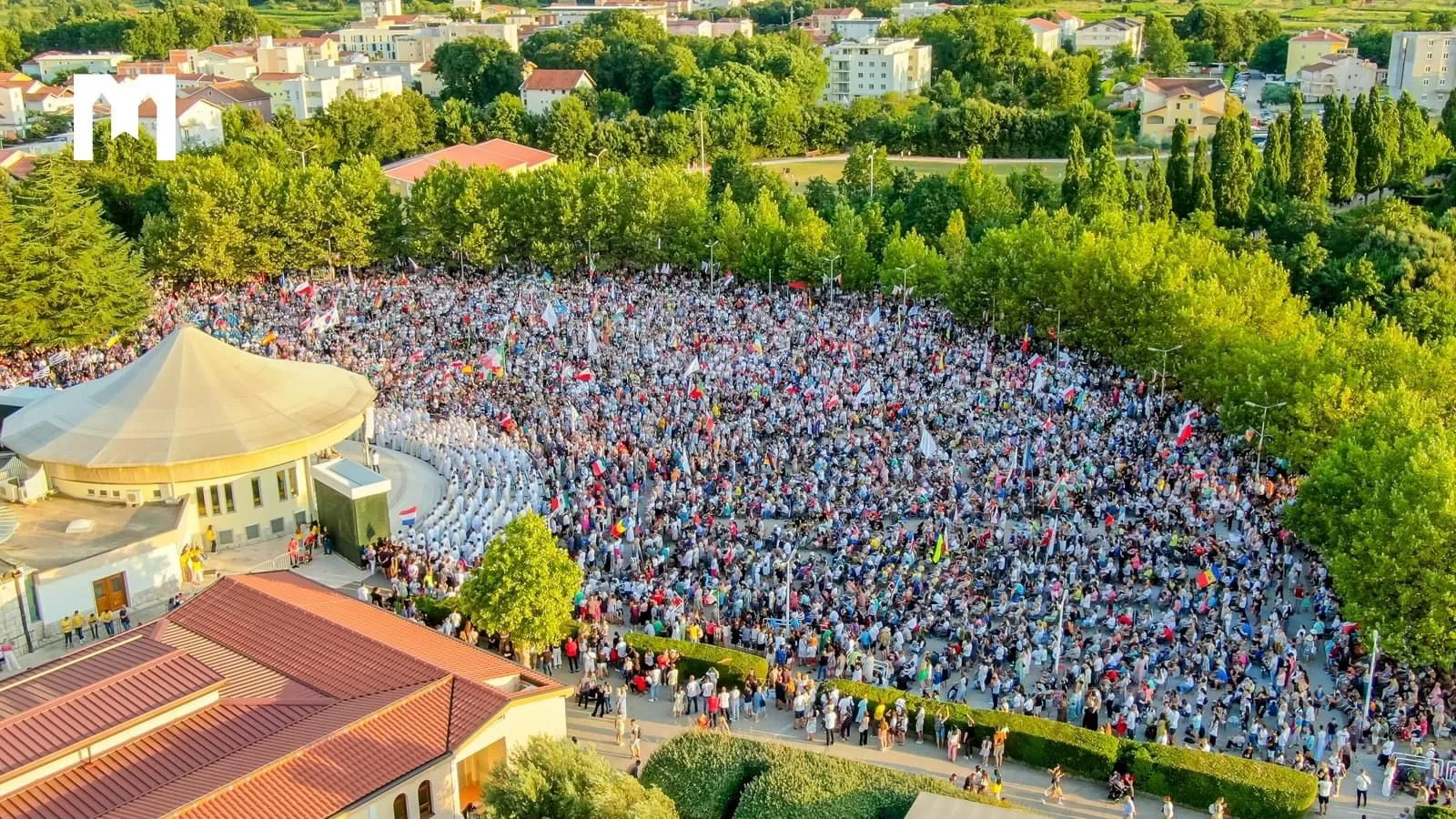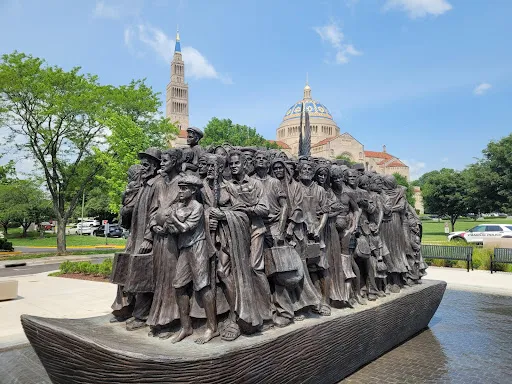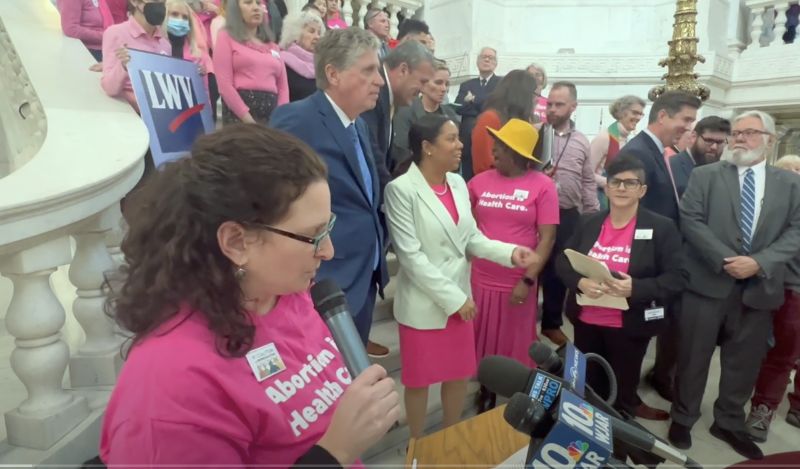
For all practical purposes, or at least most, the Supreme Court likely has already decided the most important abortion-related case to come before it in nearly half a century. But the decision is known only to a tiny handful of tight-lipped people, while the rest of us won’t find out for over three months..
Allowing for a small but, in the circumstances, unavoidable element of guesswork, the foregoing is an accurate statement of how things stand with June Medical Services v. Russo—the name of the case that virtually all Supreme Court observers agree could set the court and the nation on a brand new course concerning abortion.
June Medical Services was argued before the Supreme Court on Wednesday, March 4. Two days later, following custom, the nine justices met privately in conference and told one another where each stands on the case. Chief Justice John Roberts thereupon assigned the writing of the majority opinion to one of his colleagues—unless of course he either reserved that task for himself or else found himself in the dissenting minority, in which case the senior justice in the majority got to choose the writer.
Next come quiet weeks of writing, sharing of drafts, rewriting, privately conferring, and plain old politicking during which a majority opinion and an unknown number of concurring and dissenting opinions will take shape. As often happens when feelings run especially high, the court most likely will announce the result at or near the end of term, which is to say, late in June. Then it will adjourn until October, leaving its handiwork to be hailed by some and deplored by others.
The case, as everyone knows by now, concerns a Louisiana law requiring that a doctor who performs an abortion in the state have admitting privileges at a hospital within 30 miles of the site. June Medical Services, which operates an abortion clinic, contends that, contrary to a 1992 Supreme Court ruling, this places an “undue burden” on women seeking abortions.
But the implications of this case stretch back beyond 1992 to the court’s 1973 decision in Roe v. Wade, which legalized abortion everywhere in the country. Supporters of abortion fear—and opponents hope—that the court, now with a conservative majority, will overturn Roe or at least allow for significant state-imposed restrictions on the performance of abortion.
The oral argument shed no decisive light on what the court will do. Questions raised by the justices ranged from whether the abortion clinic has legal standing to bring suit against the law, to whether a statute unconstitutional in one state can be constitutional in another due to differences in factual circumstances from state to state.
Hundreds of demonstrators milled outside the Supreme Court building as the argument took place. Addressing pro-choicers, Senate Minority Leader Chuck Schumer (D-NY) incredibly hurled a vitriolic though unspecific threat at President Trump’s two court appointees, Justices Neil Gorsuch and Brett Kavanaugh: “You have released the whirlwind, and you will pay the price. You will not know what hit you if you go forward with these awful decisions.”
Later that day, the Chief Justice replied in an unusual public statement: “Justices know that criticism comes with the territory, but threatening statements of this sort from the highest levels of government are not only inappropriate, they are dangerous. All members of the court will continue to do their jobs, without fear or favor, from whatever quarter.”
To which I would only add: Pray for the justices. All of them.
If you value the news and views Catholic World Report provides, please consider donating to support our efforts. Your contribution will help us continue to make CWR available to all readers worldwide for free, without a subscription. Thank you for your generosity!
Click here for more information on donating to CWR. Click here to sign up for our newsletter.









Well, Chuck, since you don’t know God, you won’t know what hit you,either.
The real problem isn’t the Court’s opinion in Roe v. Wade (1973), but another case that set the stage for Roe. Purely by coincidence, the Court rendered its opinion in the Slaughterhouse Cases of 1873 a full century before Roe, and it took place in Louisiana.
The full (if brief) story of Ros v. Wade begins in 1857 with the Dred Scott case (Scott v Sandford . . . misspelled by the Clerk of the Court, it was Sanford) in which Chief Justice Taney, evidently a “Neo-Catholic”, changed the basis of the U.S. Constitution as being a grant of rights from the people to the State, to a grant of rights from the State to the people.
The 14th Amendment was, in part, intended to overturn Scott and return the source of natural rights (life, liberty, and private property) to the human person. In 1873, however, the Court rendered an opinion in the Slaughterhouse Cases. Ostensibly the cases were about the right of the state of Louisiana to enact health legislation and compel the slaughterhouses in New Orleans to move downriver. The butchers conceded the right of the State to do so — but not compel them to use the facilities of a government established monopoly owned by political friends of the carpetbag governor.
Slaughterhouse was argued with the opposing sides debating whether rights come from the various states or the federal government. Twenty years later Stephen Field of California, one of the dissenting justices, had the courage to admit that everyone had been wrong, that rights come from the human person, not the State in any form.
The damage, however, had been done, and the 14th Amendment rendered a nullity. As the constitutional scholar William Winslow Crosskey noted,
“So, the Court’s opinion in the Slaughter-House Cases was, undoubtedly, most craftily written; written so as to enable the Court, with a good face, in future cases, to jump either way: to observe the intended meaning of the Privileges and Immunities Clause if that seemed unavoidable, or, in the alternative, to destroy the clause utterly if this seemed safe. And the fact that this elaborate preparation was made also means that the majority Justices saw and fully comprehended the possibility of the intermediate, plain, and sensible meaning of the Privileges and Immunities Clause here expounded, to which, indeed, Justice Bradley called attention, in his dissenting opinion. So, the majority must, as the minority charged, already have determined, if they dared, to destroy this new provision of the Constitution completely.” (William Winslow Crosskey, Politics and the Constitution in the History of the United States. Chicago, Illinois: University of Chicago Press, 1953, 1130.)
So, yes, overturn Roe v. Wade — but unless Slaughterhouse is also overturned, another Roe v. Wade decision is merely a matter of time.
Thank you, Mr. Michael D. Greaney!! the Evil One and his parasites do insert locks, ticks and traps into laws and have a plan B, C and D to have their Lies, Corruption and Death to remain in place and become more and more accepted and institutionalized.
Exorcists confirm that the spiritual world is determined by very strict laws and, given his greater room to roam on Earth, Satan is the Consummate Lawyer, with all due respect to good lawyers like Jay Sekulow of the A.C.L.J. and many others. Again, thank you for your timely and scholarly warning!!
This requirement of abortion providers is in reaction to the fact discovered in the Kermit Gosnell trial. A women died by his hand because of a botched abortion. Women daily are rushed to hospitals from botched abortions by crummy doctors. The or abortion crowd’s anti stance on this issue puts a lie to their claim of being pro woman. Cuomo just signed a law in NY allowing non doctors to perform abortions. I fail to see the logic.
No abortion on demand! However, during his Senate hearing Kavanaugh was asked if he would overturn Roe… he retorted “Roe is settled law”. I disagree! The taking of precious life should be a crime with the exception of the life of the mother being threatening by her pregnancy.
Morgan,
Direct abortion is never a medical necessity.
If a mother’s life is in jeopardy there are other options.
These endless arguments about the minutiae surrounding abortion started with Justice Blackmun’s absurd position that human life before birth could be divided into three parts. This bending of fact into unrecognizable wish fulfillment is responsible for the nonsense that pervades other court decisions and causes loss of respect for our judiciary. At its heart, it turns courts into super legislatures they were never intended to be.